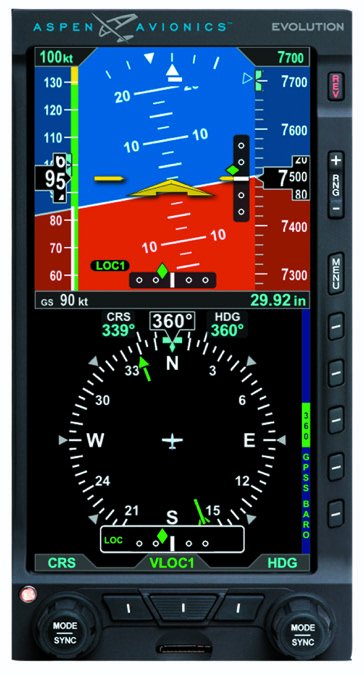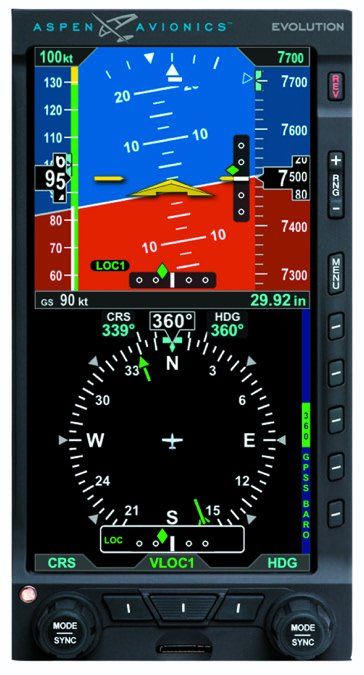Budget EFIs
I saw your editorial and video coverage on Aspen’s new E5 low-cost EFIS. While I was initially excited, I’m struck at how familiar this seems. The new Aspen Evolution E5 is basically Aspen’s 1000 “VFR” model with an approved TruTrak autopilot interface and also an updated processor so that it runs faster. It might be cheaper than the old entry-level display (I don’t recall the price) but I don’t see the VFR model on Aspen’s website anymore.
I don’t begrudge Aspen trying to make money as they have a good product. However, I would think that if they really want to dominate the market competition, the E5 should start at $4000 and maybe even $3500. This would put it we’ll below a pair of Garmin G5 instruments (attitude and DG) and make it so attractive that they would fly off the shelves. If this is an uncertified product as claimed, I would think these prices are possible since the cost couldn’t have been that much to update the hardware.
Karl Vogelheim
via email
We’ll break down Aspen’s product line. The Evolution 1000 VFR PFD was priced at $4995. On its website, Aspen has a system comparison guide and currently shows four models. The E5 DUAL EFI is $4995 ($5995 with the ACU required for autopilot interface). It differs from the current $6180 Evolution 1000 Pilot model mainly because it has a VDI (vertical deviation indicator) and LDI (lateral deviation indicator) navigation display for flying approaches. The E5 doesn’t have onscreen wind direction and speed data, but the Pilot model does. The Evolution 1000 Pro PFD is $10,995 and the Evolution 1000 Pro Plus PFD is $13,995.

It’s not entirely correct to say the new E5 is uncertified. It doesn’t have a TSO, but instead an AML-STC for installation.
Thank you for diving deep with the EFIS market survey article in the June 2018 Aviation Consumer. I can tell by your tone that you think a certified version of Garmin’s G3X Touch EFIS suite is inevitable and I don’t think Garmin has a choice. I had considered the new TXi display for my 182, but my shop quoted me over $20,000 with the engine display option. I put the brakes on for now because this airplane is a 1978 model and I’m staring down an engine swap. But, if the G3X Touch were priced sub-$10,000 with engine monitoring, I’d jump on it yesterday.
Floyd Webster
via email
Flight Design
I enjoyed the Flight Design CTLSi flight review in the June 2018 issue of Aviation Consumer. What you didn’t say is whether the company plans to offer more engine choices now that it’s back in production. Doesn’t a turbocharged version of the stock Rotax engine make sense? Seems that would give the airplane even more climb authority and I suspect there’s a buyer demographic that would embrace it. I operate in the Rockies and have held off buying an LSA (to replace my turbocharged Cessna 210) because I’ve been watching the Rotax 915 engine with interest. Will it be a player in the Flight Design or any other higher-end LSA?
Stan Woodford
via email
Flight Design didn’t comment on future engines for the CTLSi, but we don’t think more choices are out of the question, especially as it resurrects the C4 project. That’s the four-seat model the company was in the process of certifying before the hiatus. We’re watching the product line with interest.
Defending The Gauges
First off I would like to say I have read, enjoyed and found value in Aviation Consumer for years. Keep up the good work. However, I have to take issue with Larry Anglisano’s condescending attitude toward pilots and their aircraft who have conventional gauges. In the May 2018 First Word commentary, Mr. Anglisano spoke of the bad old days of analog equipment. That would be the first century of aviation. From the Wright Flyer to the SR71 are bad old days? Going from a distance of 852 total feet to Mach 3+ are the bad old days because they used analog gauges? Mr. Anglisano you are just plain wrong. This was a wonderful time for aviation and included incredible advancements and innovation all with analog gauges.
With respect to the question of whether glass panels are somehow inherently safer than conventional panels, the jury is still out. I’m seeing more reports of pilots with glass panels crashing in easy IFR situations because they were confused by the complexity of the glass panel. I had a frozen pitot tube flying to work in a RV4 homebuilt with conventional gauges. Obviously they were adequate because I’m alive and writing this letter to you.
Rod Dykhouse
vie email
In that commentary, Anglisano was referring more to the old days of certification, where the rigors placed on analog gear cost buyers too much money. Meanwhile vacuum-driven technology remained unreliable compared to digital instruments.


